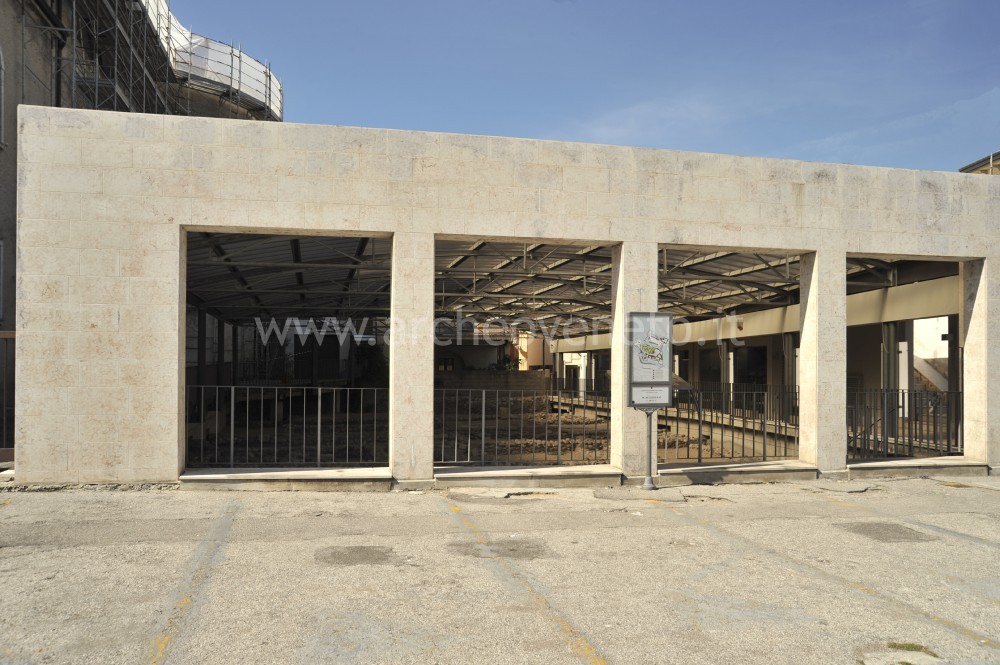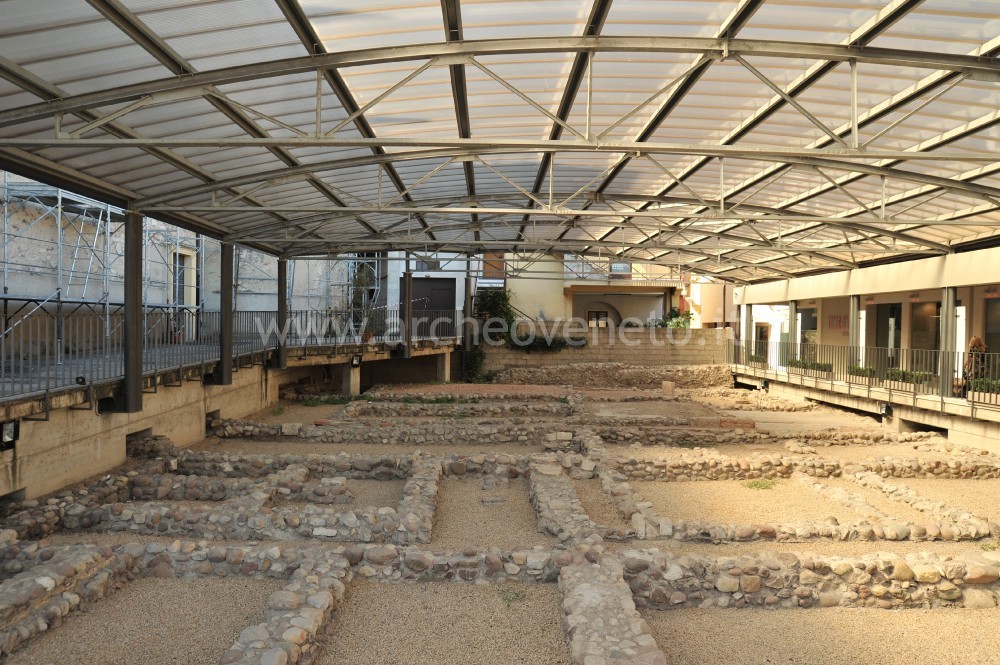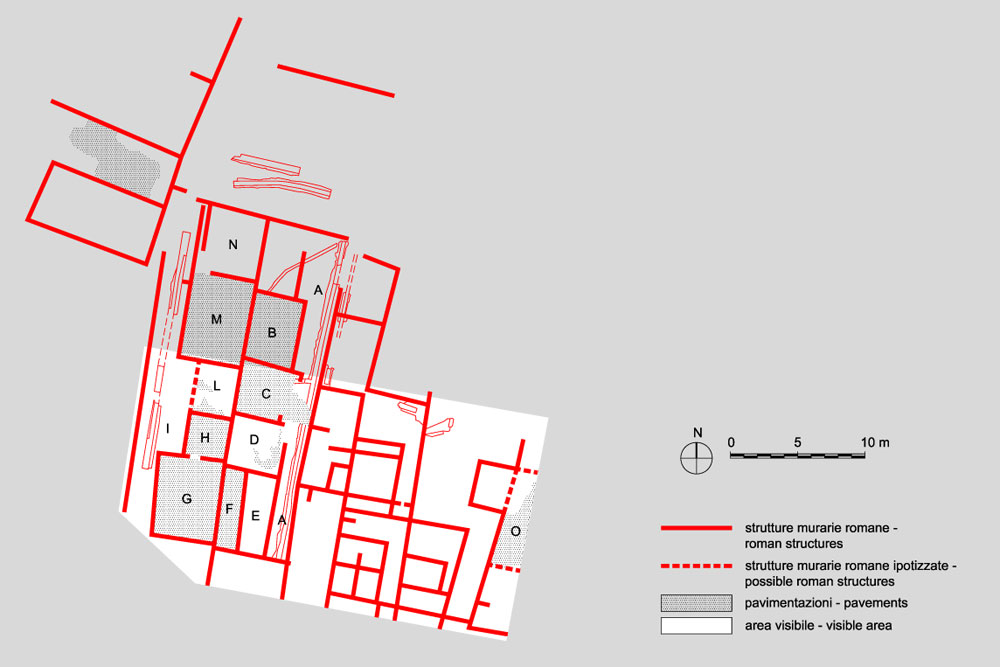|
|
File
Roman houses and production/crafts areas in "Piazza Ferdinando di Savoia" – Peschiera del Garda
|
| Piazza Ferdinando di Savoia, near the church – 37019 Peschiera del Garda (VR)
|
  |
|
Summary

The archaeological area in Peschiera del Garda conserves the remains of a Roman settlement which started around the end of the I century B.C. on the remains of an older village of III-II B.C. The settlement, with commercial function, was restored during the II century and lasted up to the IV century A.D. It is believed that this site corresponds to the ancient Roman village of Arilica, which is known thanks to four inscriptions of the “collegium nautarum Arilicensium”, the association of boat drivers in Peschiera, which managed the traffic in the southern part of the lake.
History of research
The excavations were carried out between 1974 and 1981 by the General Direction for Archaeological Heritage in the Veneto region, on the occasion of construction works in this area. In 1999 new investigations were conducted on the occasion of further construction works.
Urban and geographical context
“Peschiera del Garda” is located on the southern shores of the Garda lake, at the opening of the Mincio river. Its position is extremely suitable to control and develop those trades which since ancient times occurred between the Po plain and the alpine valleys, thanks to the connection of the Po and the Mincio rivers and the Garda lake. The area where the Roman village was located used to undergo frequent floods and stagnant water.
Chronology
I – II A.D. |

 The archaeological area in the village “Peschiera del Garda” conserves the remains of a Roman settlement that was probably built at the end of the I century B.C. in the place where the important Roman road Verona-Brescia-Milano crossed the Mincio river close to the lake shores. The settlement was restored in the II century A.D. and lasted until the IV century A.D., however the artefacts suggest that there might have been some minor living continuity until the V century A.D. The archaeological area in the village “Peschiera del Garda” conserves the remains of a Roman settlement that was probably built at the end of the I century B.C. in the place where the important Roman road Verona-Brescia-Milano crossed the Mincio river close to the lake shores. The settlement was restored in the II century A.D. and lasted until the IV century A.D., however the artefacts suggest that there might have been some minor living continuity until the V century A.D.
As it’s been discovered through the excavations, this area consisted in three or four buildings with different living and possibly production functions. Of this whole site today the archaeological area in the village “Peschiera del Garda” conserves the southern part of the residential and crafts making buildings.
The area with residential function (rooms A-P) is oriented north-south and seems to be included between two smaller transition rooms having a water logline running underneath. Originally the northern side of this compound opened on a cobble paved court through a L-shaped space divided by a partition in two rooms: the shop and its entrance corridor, which are not included in the visible area. The house runs along a long corridor (A) giving access to: a room paved with stone fragments and mortar (not visible today); a stone paved court (well visible from the northern side of the archaeological area) and two smaller rooms (D and E), of which one, D, was decorated by a polychrome geometric mosaic. West to this sequence of rooms there is the other side of this building, whose organization appears to be less clear since all the original doorsteps and pavements have gone lost. Here there is an alignment of rooms A, B, G, N, which communicates with G and which has been interpreted as a shop with its back part. Finally, F is accessible from E and it is clearly possible to see today the remains of a limestone slabs tub.
The area that is closest to the square “Piazza Ferdinando di Savoia” displays a more chaotic organization, with very small rooms that exclude their use as living places and which rather suggest that they might have been used for production/crafts making purposes.
Finally, along the eastern border of the area (which is visible from the side on the square “piazza Ferdinando di Savoia”) it has been possible to discover the remains of another building, closed on the west by a wall. Some parts of three rooms remain of the building, of which one (O) was paved in broken stone and mortar and was painted in red.
The excavations of the late Nineties have also well documented the road, which was constructed at the end of the I century B.C. and which was used at least until the IV century A.D. when, probably near the “piazza Ferdinando di Savoia”, the milestone of Gioviano was placed (363-364 A.D.) – which was recovered during the excavations.
|

Visitability: Esterno
Ticket: No
 School access School access
Recommended tour time (minutes): 40
 Information boards Information boards
 Multilingual ads: Inglese Multilingual ads: Inglese
Panels
| Mangani E., Rebecchi F., Strazzulla M.J. 1981, Emilia, Venezie (Guide Archeologiche Laterza), Bari, pp. 182. |
| Franzoni L. 1987, Il territorio veronese, in Il Veneto nell’età romana, II, a cura di Cavalieri Manasse G., Verona, pp. 81. |
| Cavalieri Manasse G. 1997, Testimonianze archeologiche lungo la sponda orientale, in Ville romane sul lago di Garda, a cura di Roffia E., Brescia, pp. 119-121. |
| Bruno B., Cavalieri Manasse G. 2000, Peschiera del Garda: scavi recenti nel vicus di Arilica, in Quaderni di Archeologia del Veneto, XVI, pp. 78-83. |
| I luoghi della cultura 2006, Roma, pp. 385. |
|

